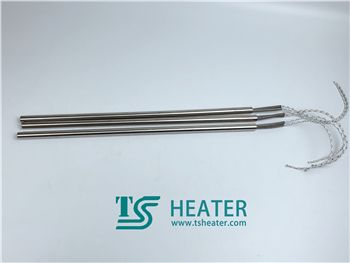
Oct 14 2022

Oct 14 2022

Oct 14 2022

Oct 01 2022
The filter of the cast aluminum heater is composed of a simplified, stainless steel strainer, a transmission, a sewage part and an electrical control part. The water to be filtered flows in from the nozzle, passes through the filter screen, and enters the pipeline through the outlet for process circulation. During the cycle, many particulate impurities in the water are intercepted by the filter.
After a long time, more and more impurities will be trapped, and the filter holes will become smaller and smaller, which will cause a pressure difference between the inlet and the outlet. When the pressure difference reaches the set value, an electrical signal will be sent to the controller, and the control system will start the drive motor. The transmission component drives the shaft to rotate, and simultaneously opens the sewage outlet to remove dirt. After the cleaning is completed, the system returns to the initial test state, and the system runs normally. Filters can be divided into self-cleaning filters, fully automatic filters, brush filters and elastic filters according to their functions. In the general explosion-proof electric heater system, the elastic filter is used, which is maintenance-free and automatic cleaning, thus avoiding the hidden trouble of the filter element due to long-time work blockage.
High temperature duct heater
Increasing the gas inlet flow rate of the ceramic electric heater can enhance the convective heat transfer of the explosion-proof electric heater, effectively reducing the temperature of the surface of the electric heating element in the explosion-proof heater, not only prolonging the service life of the electric heating element of the explosion-proof heater, but also making The heat loss of the air electric heater is reduced, which promotes the efficiency of the air heat exchanger. If the speed is too large, the pressure loss is sharply increased, and the heating efficiency is not improved.
If the other conditions are the same, the surface load is changed, and the wall temperature of the electric heating element in the explosion-proof electric heater changes. If the surface load increases, the wall temperature of the electric heating element also increases, so the electric heating element in the explosion-proof heater is lowered. The service life, but if the surface load is too small, the wall temperature is too low, the efficiency of the explosion-proof electric heater heat exchanger is reduced, so the selection of electric heating elements in the explosion-proof electric heater is more important.
When the final temperature of the air in the explosion-proof electric heater is increased, the air Resin number is gradually reduced due to the continuous increase of the air viscosity, so that the convective heat transfer intensity is gradually decreased, and the surface temperature of the electric heating element in the explosion-proof electric heater is increased, and the infrared carbon sulfur is increased. The analyzer increases the heat loss and reduces the efficiency of the heat exchanger. When the increase is too large, the temperature of the surface of the electric heating element also rises sharply, so that the general electric heating element is difficult to bear, so the increase of T2 is usually limited by the heat resistance of the electric heating element material in the explosion-proof electric heater.